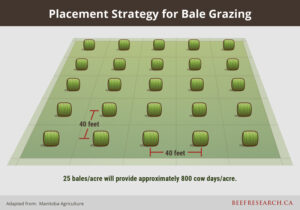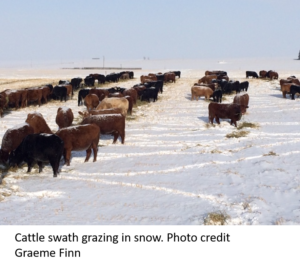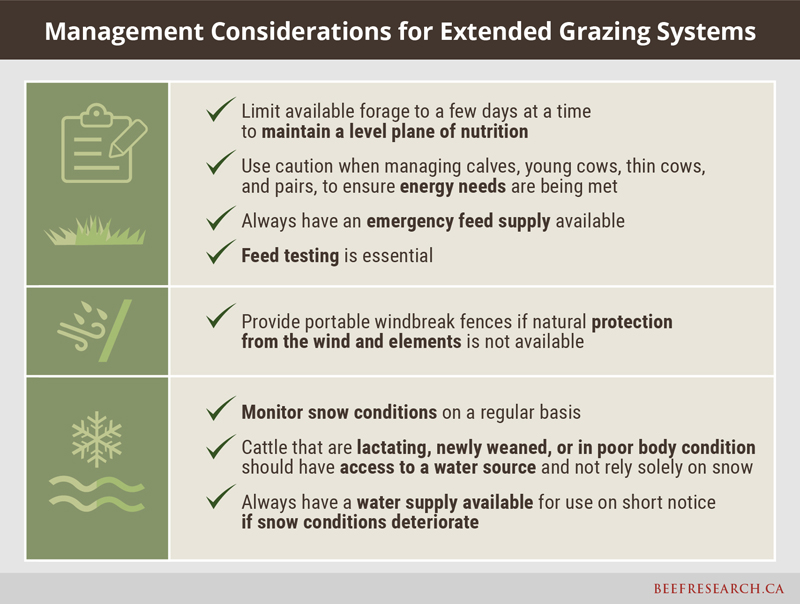New Web Page: Extended Grazing

Editor’s note: Relevant and up-to-date information that had been available on Foragebeef.ca is gradually being added to BeefResearch.ca. (More information). The new Extended Grazing page, which is previewed below, is one example. Further webpages will be added or updated on BeefResearch.ca to include the valuable content from Foragebeef.ca, ensuring that information remains freely available online. Completion is expected by Spring 2020.
Methods to extend the grazing season, including stockpiled perennial forages, use of annual forages, crop residues, and bales left in the field, have considerable economic and environmental benefits over traditional winter-feeding systems. Well-managed systems reduce or eliminate labour, feed harvesting, transport and delivery, and manure handling. These systems also allow for flexibility in returning nutrients back to the land instead of concentrating animals in pens. However, the ability to implement a winter grazing system is dependent on a number of variables including water availability, snow conditions, provision of shelter, and forage use by wildlife.
Numerous studies have demonstrated the economic and environmental benefits of extended grazing systems. Costs of production are reduced compared to more traditional winter feeding in confinement, along with benefits to the environment and agronomic performance due to improved soil fertility and forage yields. Barriers for adoption expressed by producers include too much snow, lack of a winter water source, cold weather, feed waste, animal welfare and animal performance, all potential risks which must be carefully monitored and managed.Extended grazing methods include:
As with all winter management scenarios, caution is required when managing calves, young cows, thin cows and cows with calves, as they require higher levels of energy and management than mature dry cows.

- Stockpiled perennials
- Grazing annual small grain cereals
- Swathgrazing
- Corn grazing
- Brassica crops
- Grazing crop residues
- Bale grazing
For any type of extended grazing system to be successful, good management is needed to keep cattle healthy and in good condition. Forage quality, fencing, water and shelter are important elements that need to be carefully planned.

To learn more about extended grazing visit the new web page.
Click here to subscribe to the BCRC Blog and receive email notifications when new content is posted.
The sharing or reprinting of BCRC Blog articles is welcome and encouraged. Please provide acknowledgement to the Beef Cattle Research Council, list the website address, www.BeefResearch.ca, and let us know you chose to share the article by emailing us at [email protected].
We welcome your questions, comments and suggestions. Contact us directly or generate public discussion by posting your thoughts below.